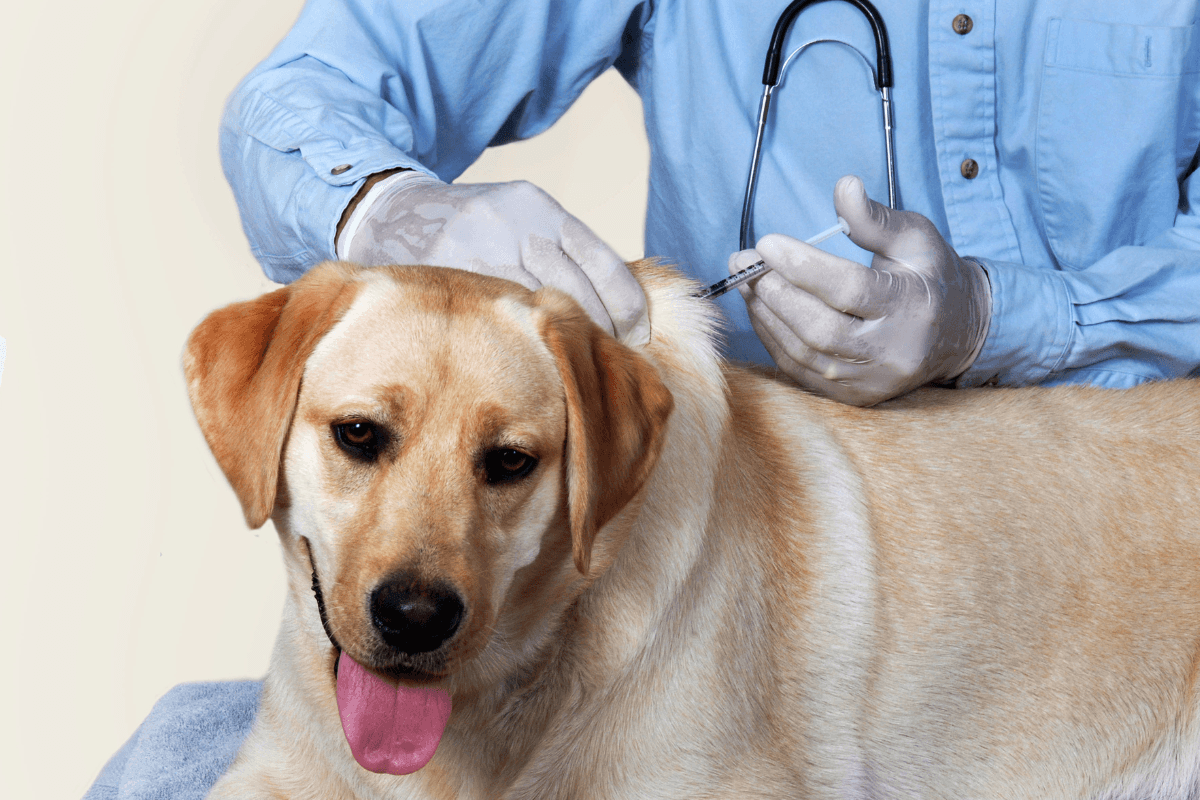Diabetes in dogs is a growing concern, affecting their energy levels, weight, and overall health. When a dog’s body doesn’t produce enough insulin or becomes resistant to it, blood sugar levels rise, leading to serious health complications. Managing diabetes in dogs requires consistent care, with insulin therapy being a cornerstone of treatment.
One of the most commonly prescribed options is Humulin N insulin. This intermediate-acting insulin helps regulate blood glucose, allowing diabetic dogs to maintain better energy levels and avoid complications. But how does it work, and what should pet owners know before starting treatment? This guide covers everything you need to know about Humulin N insulin for dogs, including its benefits, dosage, side effects, and administration tips.
How Does Humulin N Insulin Work for Dogs?
Humulin N is an intermediate-acting insulin that helps regulate blood sugar levels throughout the day. It works by mimicking the insulin naturally produced by the pancreas, allowing glucose to be properly absorbed and utilized by the body.
- It typically begins to take effect within 1 to 2 hours of administration.
- Peak effectiveness occurs between 4 to 12 hours after injection.
- The effects gradually wear off after 12 to 18 hours, making it necessary for most dogs to receive twice-daily injections.
Because of its long-acting nature, Humulin N insulin for dogs helps maintain more stable blood sugar levels compared to short-acting insulin types. However, every dog responds differently to insulin therapy, so regular monitoring is crucial.
Determining the Right Humulin N Insulin Dosage
The Humulin N insulin for dogs dosage varies depending on factors such as your dog’s weight, blood sugar levels, and overall health. Your veterinarian will determine the initial dose and make adjustments based on how your dog’s glucose levels respond.
Key Dosage Considerations:
- Initial dose: Most dogs start with 0.25 to 0.5 units per pound of body weight, given twice daily.
- Adjustments: The vet may increase or decrease the dose based on glucose monitoring results.
- Injection site: Insulin should be administered under the skin (subcutaneously), usually near the shoulders or along the back.
- Consistency: Insulin should be given at the same time every day, alongside a scheduled feeding routine to prevent fluctuations in blood sugar levels.
Skipping or altering doses without veterinary guidance can lead to hyperglycemia (high blood sugar) or hypoglycemia (low blood sugar), both of which can be dangerous.
Recognizing Humulin N Side Effects in Dogs
While Humulin N insulin is generally safe, there are potential side effects that pet owners should be aware of. Some dogs may react differently to insulin, making regular monitoring essential.
Common Side Effects:
- Low blood sugar (hypoglycemia): Symptoms include weakness, shaking, confusion, seizures, and loss of coordination. If untreated, this can be life-threatening.
- Allergic reactions: Some dogs may develop itching, swelling, or difficulty breathing due to an insulin allergy.
- Weight gain: Dogs on insulin therapy may experience increased appetite and gradual weight gain.
- Injection site issues: Mild redness, swelling, or irritation may occur but usually resolves on its own.
If you notice any concerning side effects, contact your veterinarian immediately. Humulin N insulin for dogs requires careful administration and monitoring to ensure its benefits outweigh any risks.
Essential Tips for Managing Canine Diabetes
Proper diabetes management goes beyond just insulin therapy. A consistent routine, a balanced diet, and regular vet visits all play a role in maintaining your dog’s health.
Maintain a Strict Feeding Schedule
Dogs receiving insulin should eat at the same times every day to prevent blood sugar fluctuations. Vets often recommend a high-protein, low-carbohydrate diet to help regulate glucose levels more effectively.
Monitor Blood Sugar Levels
Regular glucose testing helps determine whether Humulin insulin for your pet dogs is working as expected. Some pet owners use at-home glucose meters, while others rely on periodic veterinary checkups for testing.
Keep Insulin Properly Stored
Insulin should be stored in the refrigerator between 36°F and 46°F (2°C – 8°C). Avoid freezing it, exposing it to direct sunlight, or shaking the vial, as this can affect its potency.
Recognize Emergency Situations
Dogs with diabetes can experience sudden drops in blood sugar, which require immediate attention. If your dog shows signs of severe weakness, fainting, or seizures, apply a small amount of honey or corn syrup to their gums and seek emergency veterinary care.
Where to Learn More About Canine Diabetes Treatment
For more detailed insights into managing pet diabetes, including insulin options for dogs, visit our dedicated Humulin N Product Page.
If your pet has been diagnosed with diabetes, working with a veterinarian can help tailor the best treatment plan. Managing blood sugar levels effectively is crucial for their long-term health and quality of life.
Proper pet diabetes care involves more than just insulin—diet, exercise, and regular monitoring all play a role in keeping your furry companion happy and healthy.
Takeaways
Using Humulin N insulin for dogs is a reliable and effective way to manage canine diabetes when administered properly. It provides long-lasting blood sugar control, helping dogs maintain stable energy levels and overall well-being. However, careful monitoring and consistency are key to avoiding complications and ensuring the best outcomes.
Dog owners must be aware of potential Humulin N side effects, such as hypoglycemia or allergic reactions. Prompt action and regular checkups with a veterinarian can help manage any risks. Establishing a well-structured treatment plan, including a consistent feeding schedule and glucose monitoring, can significantly improve a diabetic dog’s quality of life.
Frequently Asked Questions
How long does a Humulin N insulin vial last for dogs?
A Humulin N insulin vial typically lasts 28 days once opened, assuming proper storage. Even if there is insulin left in the vial after this period, its potency may be reduced, leading to ineffective blood sugar control. Always check for discoloration or unusual consistency before use.
Can I switch my dog from Humulin N to another insulin?
Switching insulin types should only be done under veterinary supervision. Different insulin formulations work at different speeds and last for varying durations, which means adjustments in dosage and timing may be necessary to avoid blood sugar imbalances.
What happens if I accidentally give my dog too much insulin?
Giving too much insulin can cause hypoglycemia (low blood sugar), which is a medical emergency. Symptoms include weakness, trembling, seizures, or even unconsciousness. If an overdose occurs, rub honey or corn syrup on your dog’s gums and seek immediate veterinary assistance.


